Chicken cacciatore is the ultimate weeknight dinner that brings the comfort of Italian cuisine right to your table. This classic dish features tender chicken simmered in a rich tomato sauce, bursting with flavors from fresh herbs and vegetables. Whether you serve it over pasta or rice, it’s sure to be a hit with the whole family. The best part? You can have this hearty, flavorful meal ready in just 30 minutes. Perfect for those busy nights when you want something delicious without spending hours in the kitchen.
Why Our Recipe
- Adding heavy cream gives the sauce a rich and creamy texture.
- White wine adds depth and sophistication to the dish, but you can also substitute chicken broth.
- Ready in just 30 minutes, perfect for busy weeknights.
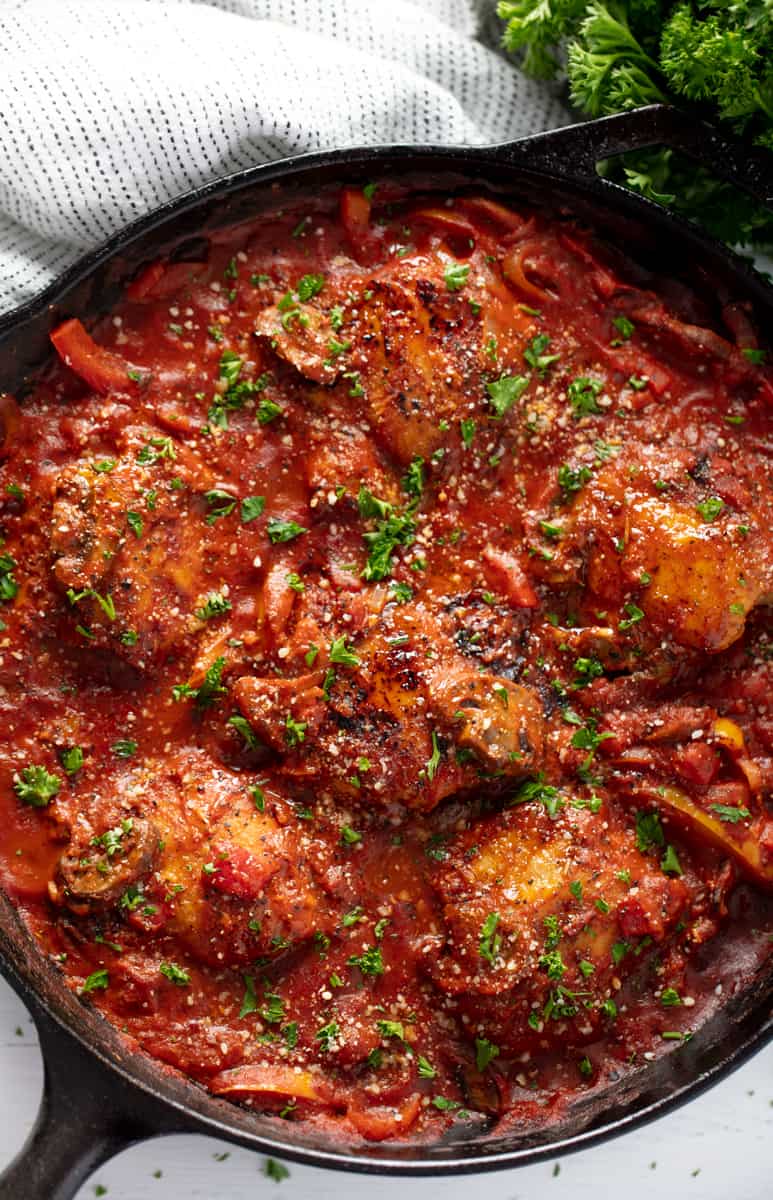
Ingredient Notes
- Chicken Thighs: Ideal for their juiciness and flavor. Substitute with chicken breasts or drumsticks if preferred.
- Bell Peppers: Adds sweetness and color. Feel free to use any color bell pepper.
- Mushrooms: Button or cremini mushrooms are great options.
- Tomato Sauce & Paste: If you need to omit the tomato paste, increase the tomato sauce to 12 ounces.
- Italian Seasoning: A key flavor component so don’t skip it!
- Flour: Can be substituted with a cup-for-cup gluten-free flour blend if needed.
- Butter: Can be substituted with extra olive oil.
- Wine: You can always replace the wine with chicken broth in the same amount.
- Heavy Cream: Adds richness, but can be substituted with half and half.
Tips from the Chef
Brown the chicken well to enhance its flavor and add depth to the sauce.
Use high-quality canned tomatoes for a consistent and rich flavor in the sauce.
Cook the vegetables until just softened to avoid mushiness.
Let the dish simmer gently to meld and intensify the flavors.
Add a Parmesan rind to the sauce while it simmers to impart an additional layer of savory depth (remove the rind before serving).
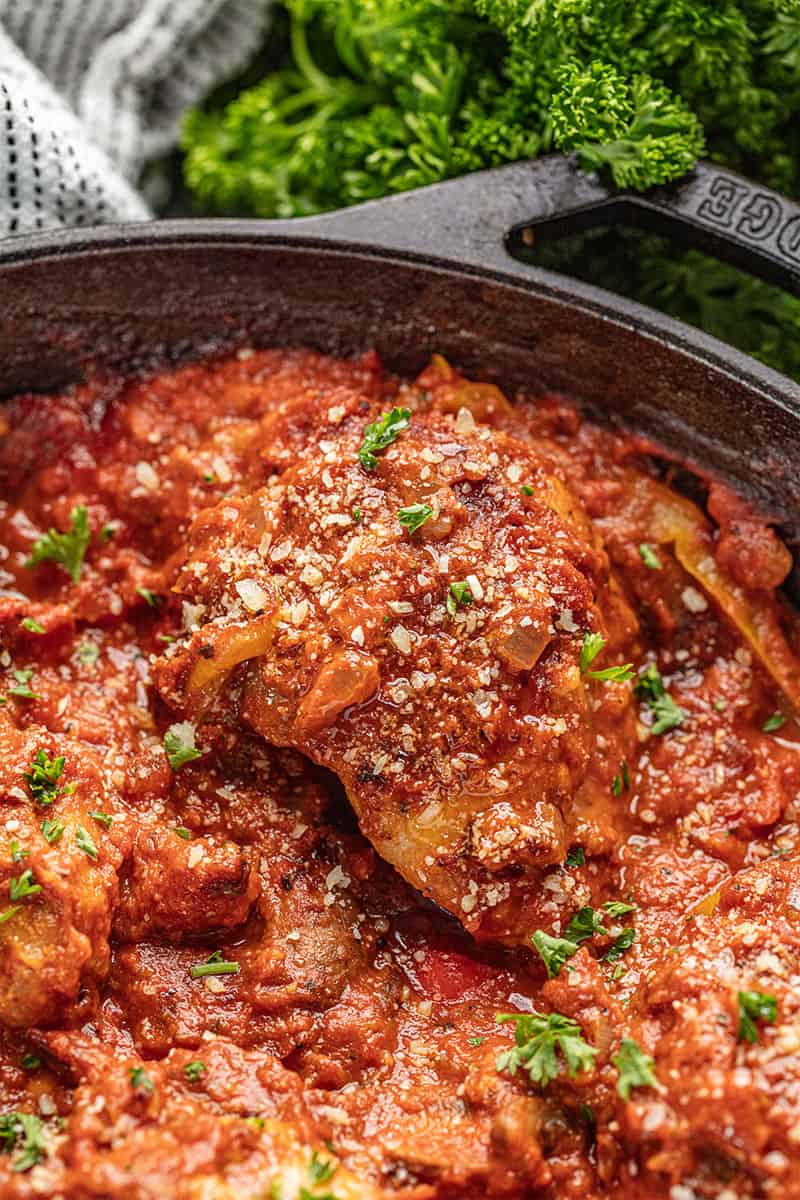
Serving Suggestions
Chicken cacciatore pairs beautifully with pasta, rice, or crusty bread to soak up the delicious sauce. It’s a versatile dish that fits well in a casual family dinner or as a comforting meal for special occasions. A light salad or veggies make great side dishes to balance the hearty flavors.
Storage & Reheating Instructions
Refrigerate any leftovers in an airtight container as soon as they’ve cooled down to room temperature. Properly stored, chicken cacciatore will last in the refrigerator for up to 3 days.
Reheat in a skillet over medium heat, stirring occasionally until the dish is heated through, about 10-15 minutes.
More delicious chicken dinners…
Watch the video below where Rachel will walk you through every step of this recipe. Sometimes it helps to have a visual, and we’ve always got you covered with our cooking show. You can find the complete collection of recipes on YouTube, Facebook Watch, or our Facebook Page, or right here on our website with their corresponding recipes.
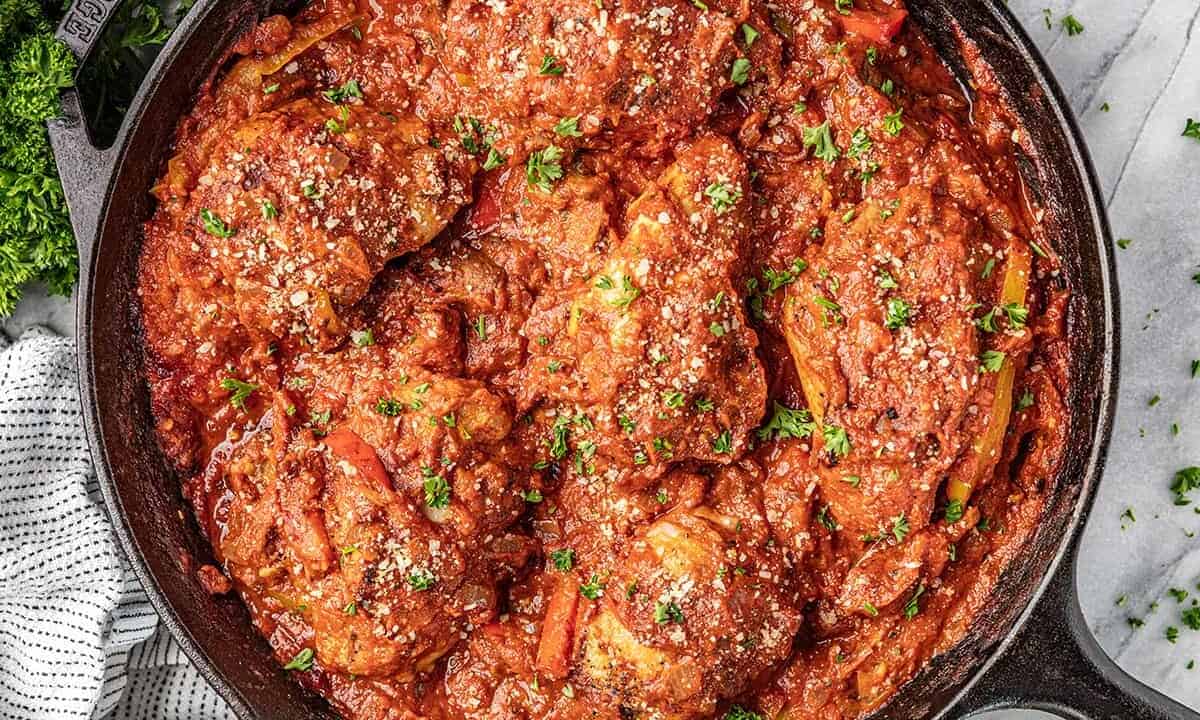
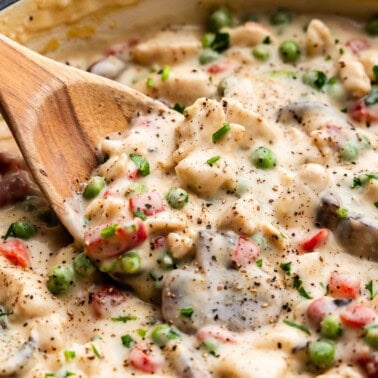

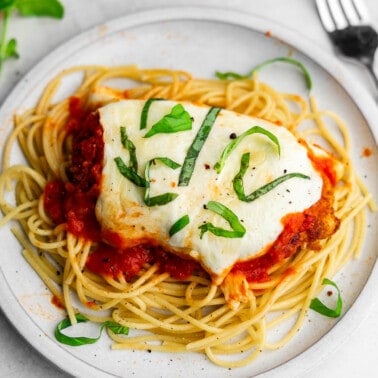
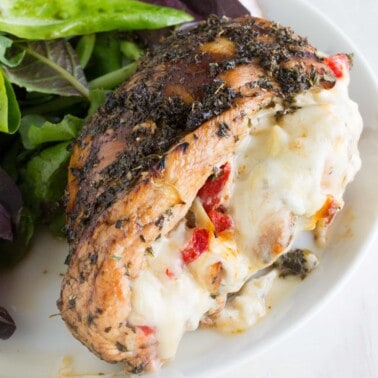
This recipe was the most delicious chicken I have ever made. They only change was that I did not include Parmesan cheese. I highly recommend this recipe. Thank you so much your delicious recipes.
Best of all my recipes for cacciatore!!
What can be used in place of heavy cream? Ours friends are dairy free.
There are lots of dairy-free heavy cream replacement options available in grocery stores. Any of them will work in this recipe.
I made this recipe for my parents when I was twelve years old and (boy) were they impressed .
I made this tonight and followed the recipe exactly!!!
It was amazing ! I had Pino noir left from the other night that I used for the wine. I will definitely be making THIS recipe again. Thank you for sharing!!!!!!!
Delicious. Made it with boneless/skinless chicken breast.
I love your recipes. I’ve followed you on FB for years. Thank you ❤️
Tried the recipe & while it wasn’t difficult and tasted ok I thought this was too tomato saucy